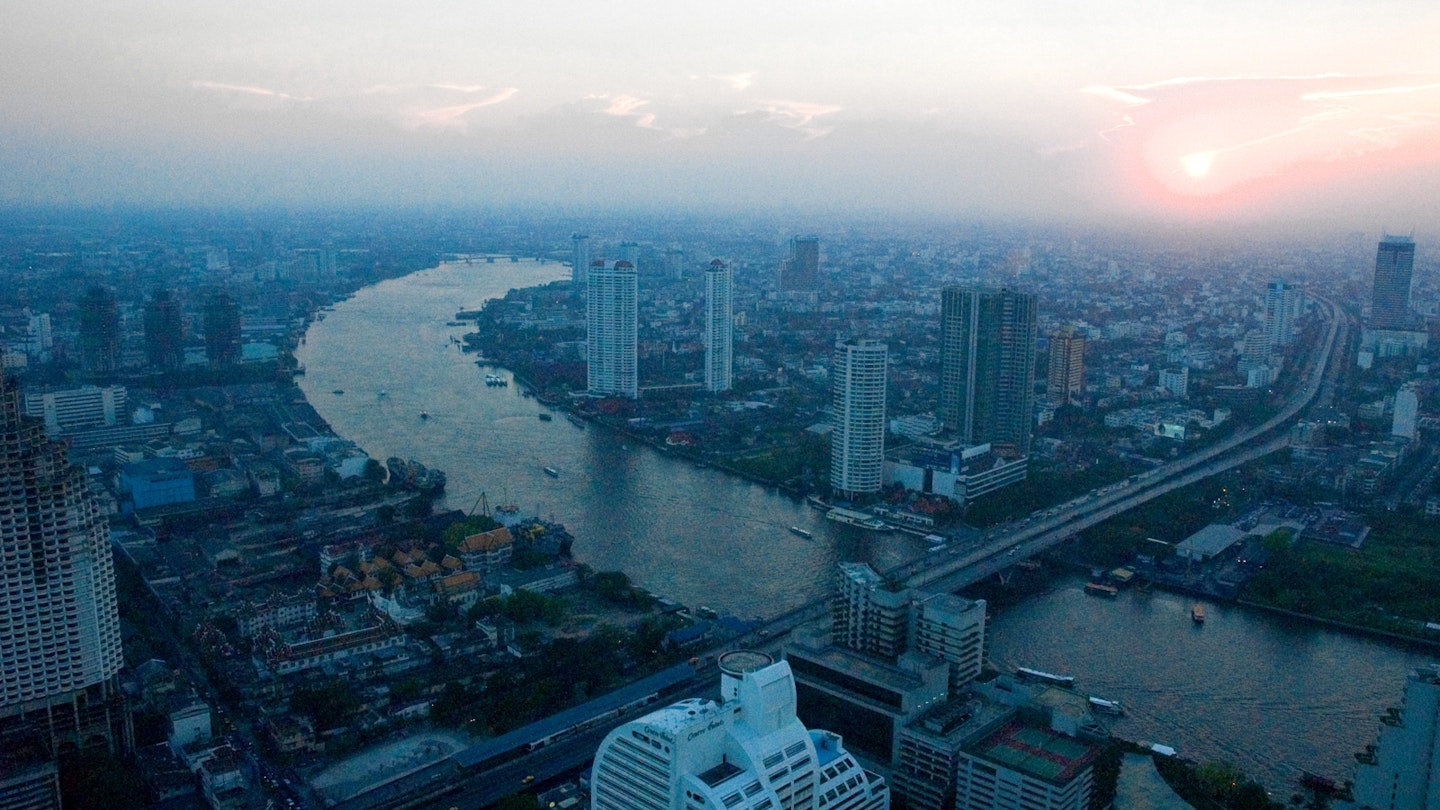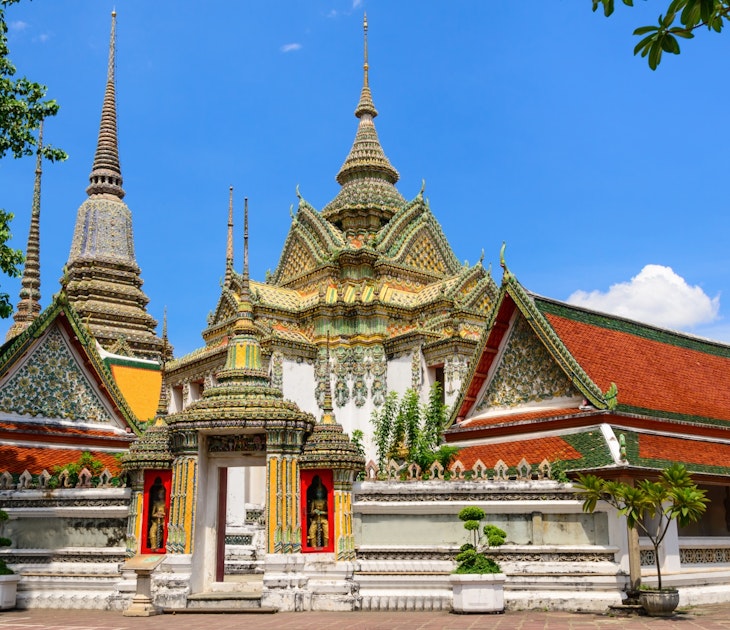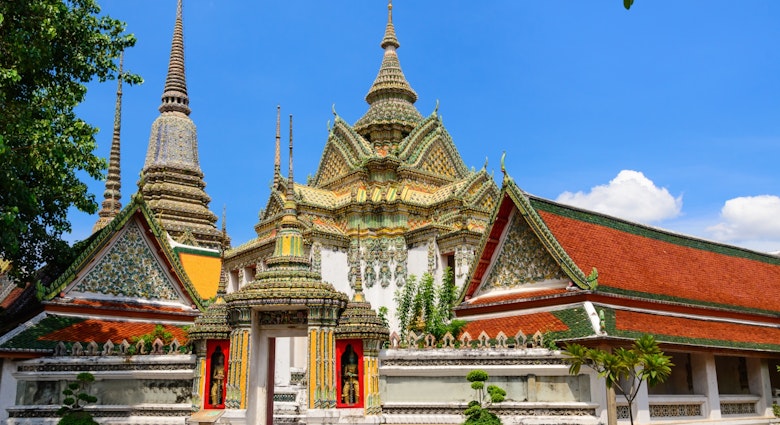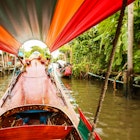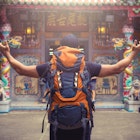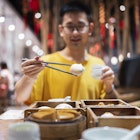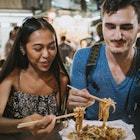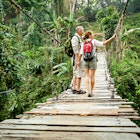Scratch Bangkok’s surface and you’ll find a city with mega-malls minutes from 200-year-old homes, with temples sharing space with neon-lit strips of sleaze, and where streets lined with food carts are overlooked by restaurants perched on skyscrapers. And best of all, as Bangkok races toward the future, these quirks will continue to supply the city with its unique brand of Thai-ness.
Stats
Population: around 8.28 million
Visitors per year: around 21.5 million
Daily budget: US$30 to $100 (1000B to 3500B), plus accommodation
Best time of year to go: December and January are both the coolest time of year in Bangkok, as well as peak tourist season. Skip some of the crowds and aim for November or February visits.

Neighbourhoods and sights
Ko Ratanakosin and Thonburi
The artificial island of Ko Ratanakosin is Bangkok’s birthplace – a logical starting point for your visit – and the Buddhist temples and royal palaces here, including Wat Phra Kaew & Grand Palace, and the enormous reclining Buddha at Wat Pho, comprise some of the city’s most important and most-visited sights. Cross Mae Nam Chao Phraya (the Chao Phraya River) to Thonburi to visit Wat Arun, one of the only Buddhist temple sights in Thailand that visitors are allowed to climb on.
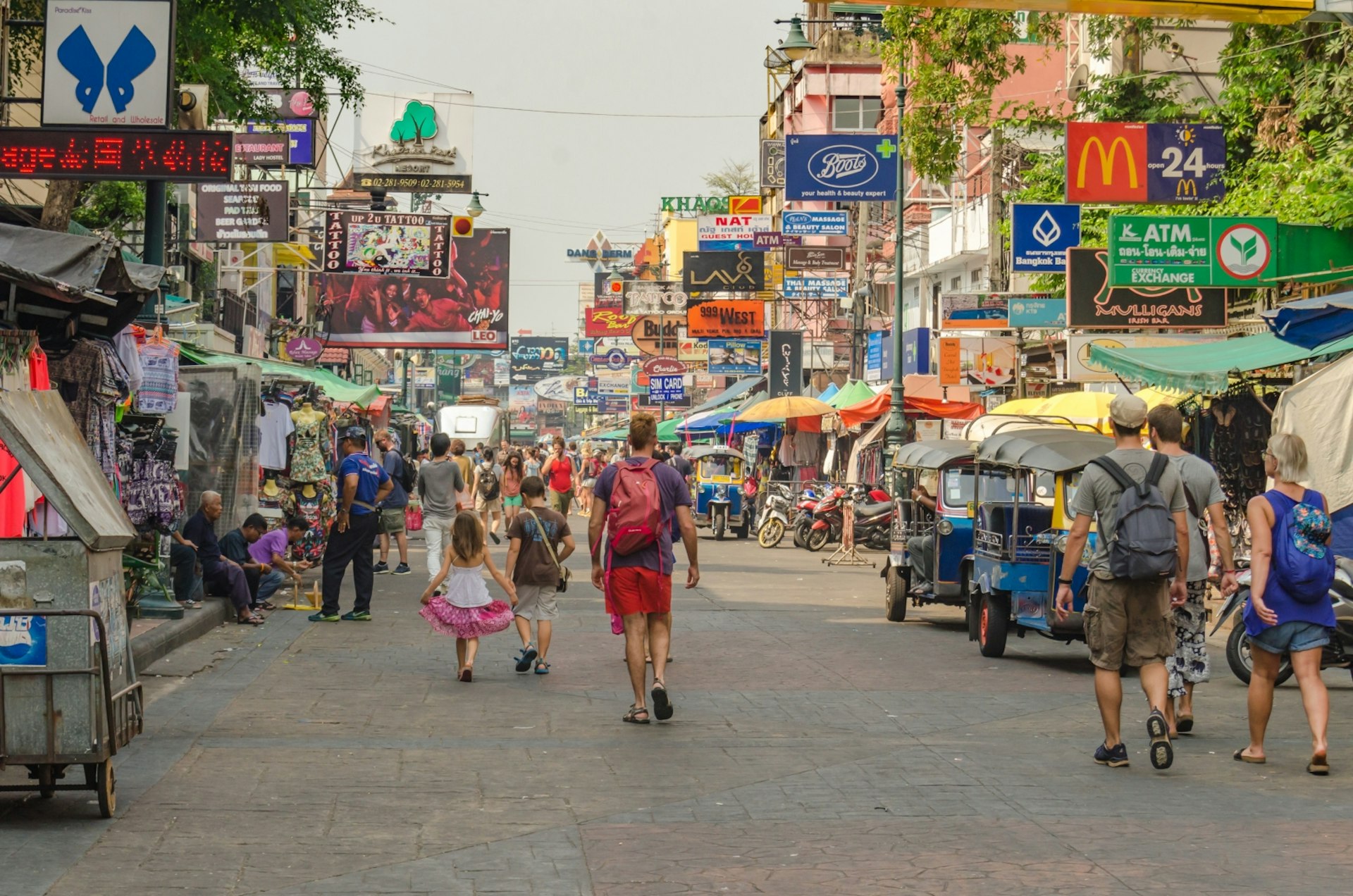
Banglamphu
Leafy lanes, antique shophouses, hectic wet markets and golden temples convene in Banglamphu – easily the city’s most quintessentially ‘Bangkok’ neighbourhood. It’s a quaint postcard picture of the city that used to be, that is until you stumble upon Khao San road, the intergalactic backpacker melting pot that’s anything but traditional. If you’re not staying here, come in the cool evenings and hit the Khao San Road Market for backpacker essentials, or grab a beer at one of the strip’s fun bars such as Hippie de Bar.
Chinatown
Although generations removed from the mainland, Bangkok’s Chinatown could be a bosom buddy of any Chinese city. The streets are crammed with vendors, gaudy yellow-gold and jade shops and flashing neon signs in Chinese characters. With this over-the-top vibe, it’s hardly a surprise that Chinatown’s own Wat Traimit is home to the world’s largest solid-gold Buddha statue. And with so much life on the streets, open-air restaurants such as Nai Mong Hoi Thot and the famous Phadungdao Seafood Stalls make Chinatown Bangkok’s best ‘hood for street food feast.

Siam Square
Multi-storey malls, outdoor shopping precincts and neverending markets leave no doubt that Siam Square is the heart of Bangkok’s commercial district. In addition to shopping, which hits its overwhelming peak at megamalls such as MBK Center and Siam Paragon, don’t miss the charming Thai architecture and art museum that is Jim Thompson House.
Riverside, Silom and Lumphini
Although you may not see it behind the office blocks, high-rise condos and hotels, Mae Nam Chao Phraya forms a watery backdrop to these linked neighbourhoods. History is still palpable in the riverside area’s crumbling architecture, evident in the nearly 140-year-old Mandarin Oriental, arguably the city’s most famous hotel. Heading inland, Silom is Bangkok’s de facto financial district by day, while after dark it transforms into a nightlife destination with districts such as Bangkok’s ‘gaybourhood’ on Soi 4, Silom, and Patpong, one of the most famous red light districts in the world. Nearby Sathorn is the much more subdued embassy zone, and is home to nahm, arguably Bangkok’s best Thai restaurant. And right next door is Lumphini Park, central Bangkok’s premier green zone, best visited in the cool morning or afternoon.

Sukhumvit
Japanese enclaves, French restaurants, Middle Eastern nightlife zones, tacky bars: it’s all here along Sukhumvit road, Bangkok’s unofficial international zone. This is modern, cosmopolitan Bangkok, manifest in fun bars such as Badmotel and WTF, and excellent international restaurants such as Jidori-Ya Kenzou and Little Beast.
Other areas
You can hardly say you’ve been to Bangkok without a visit to Chatuchak Weekend Market, located north of the city. Allegedly one of the world’s largest markets, it’s an overwhelming assemblage of vendors that unites commerce ranging from exotic fish to vintage sneakers.
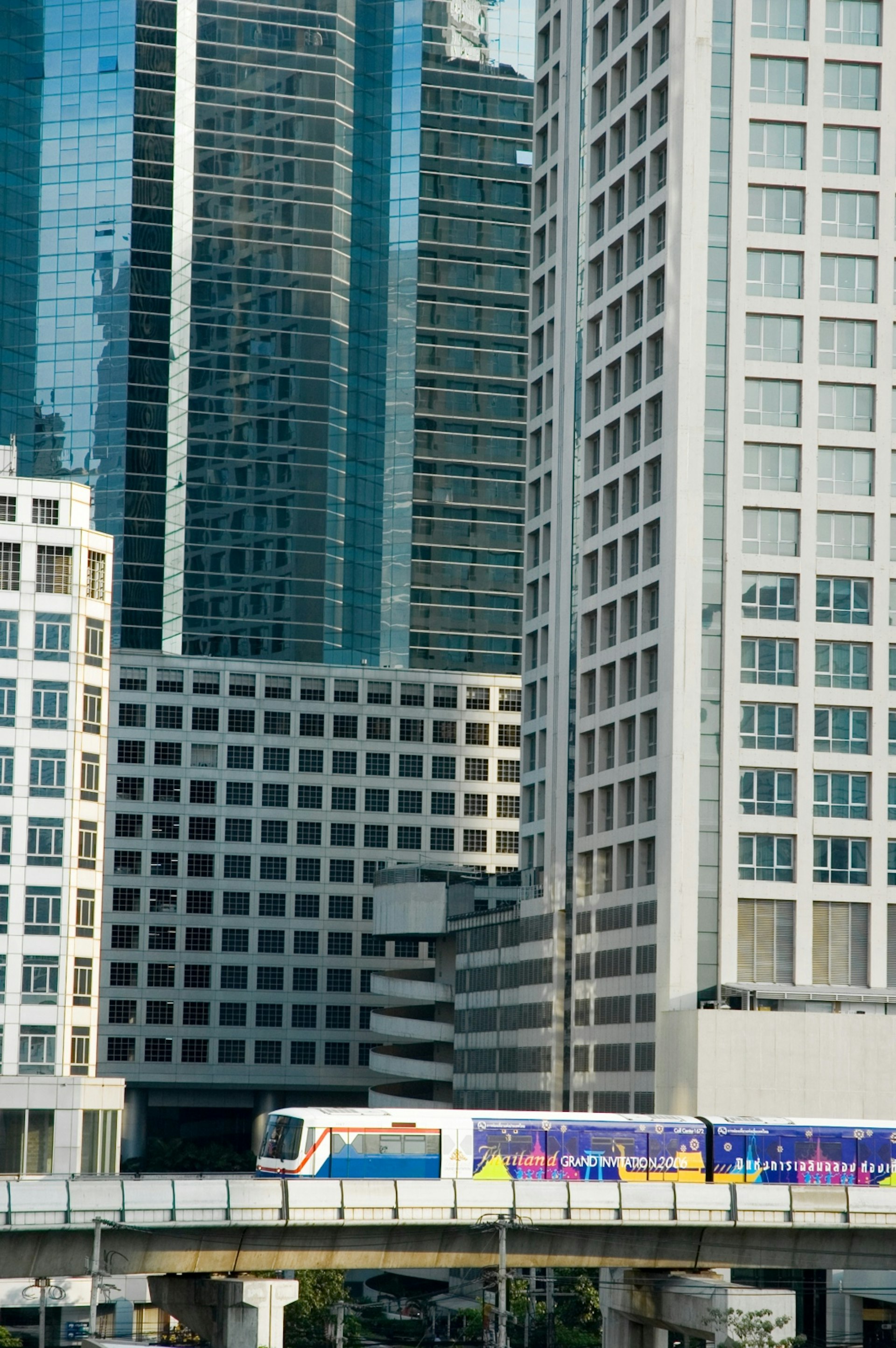
What to Pack
Cool, yet conservative clothing. Bring a scarf or sarong to cover legs and arms when entering temples.
Getting Around
Bangkok has two airports. Suvarnabhumi International Airport is Bangkok’s primary international air hub and is located 25km east of the city centre. From/to Suvarnabhumi, transport options include metered taxis, the Airport Link train and city buses. Don Muang International Airport, Bangkok’s low-cost terminal, is north of the city. From here, transport options include metered taxis and two airport bus lines.
Bangkok’s public transportation network is continually growing, but it is still relatively young, and getting to certain parts of the city – particularly the older areas such as Ko Ratanakosin and Banglamphu – remains extremely time-consuming. The best strategy is usually to combine a longer trip on the BTS Skytrain or MRT with a short taxi ride.
The elevated BTS Skytrain is probably the most efficient and convenient way to get around central Bangkok. Bangkok’s MRT is also convenient, although not quite as expansive as the BTS.
Outside peak hours, Bangkok taxis are a great bargain.
Bangkok’s river boats, the Chao Phraya River Express are a slow but steady way to visit the tourist sights in older parts of town.
Safety
Bangkok is generally a safe city and incidents of violence against tourists are rare. Commit the following to memory and you’ll most likely enjoy a scam-free visit:
- If you aren’t a gem trader or expert, then resist the urge to buy unset stones in Thailand. Otherwise, you may find yourself getting sucked into a complicated scam in which you’ll pay an exorbitant price for costume jewellery.
- Ignore any ‘friendly’ local who tells you that an attraction is closed for a Buddhist holiday or for cleaning. These are set-ups for trips to a bogus gem sale.
- Say goodbye to your day’s itinerary if you decide to go with any tuk-tuk driver willing to take you around for 20B. These alleged ‘tours’ bypass all the sights and instead cruise to all the fly-by-night gem and tailor shops that pay drivers commissions.
- Refuse any taxi driver who quotes a flat fare, which will usually be three times more expensive than the reasonable meter rate. Walking beyond the tourist area will usually help you find an honest driver.

Etiquette
- Don’t say anything critical about the Thai royal family.
- Do dress respectfully at royal buildings and temples.
- Don’t wear your shoes indoors.
- Do try to avoid conflict or raising your voice with locals.
- Don’t touch another person’s head
Booking Ahead
- Book a hotel room a couple months in advance, especially for December/January.
- One month before you leave, apply for a visa at the Thai embassy or consulate in your home country if you plan to stay longer than 30 days.
- A couple weeks beforehand, book a table at nahm or lessons at a Thai cooking school for a proper introduction to Thai food.

